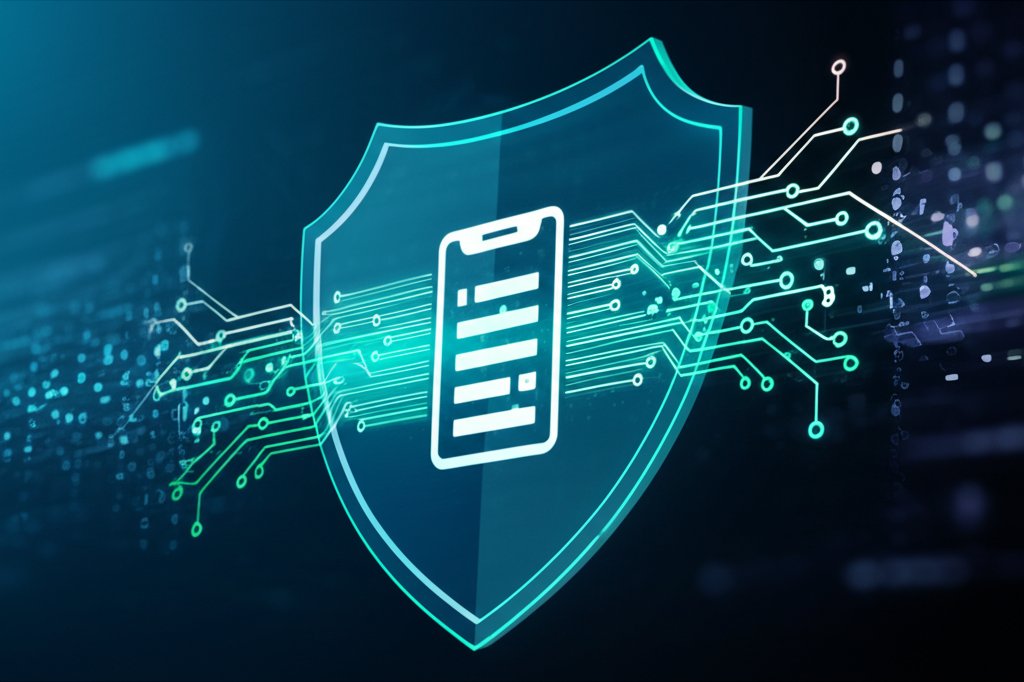In the evolving landscape of cyber threats, something truly unsettling is happening. We’re witnessing a dramatic shift in how cybercriminals operate, moving from easily detectable, poorly written scam emails to hyper-realistic, AI-generated trickery. It’s a new reality, and frankly, the old rules for spotting phishing simply don’t apply anymore.
For a small business, this isn’t just a technical problem; it’s a direct threat to your operations, your finances, and your reputation. AI makes phishing attacks more personal, unbelievably believable, and frighteningly scalable. It’s not just the IT department’s concern; it’s everyone’s.
This article isn’t here to alarm you, but to empower you. We’re going to demystify what AI-powered phishing truly is and, more importantly, equip you with actionable, non-technical strategies to protect your business from these increasingly sophisticated threats. Because when it comes to digital security, being informed is your strongest defense.
What Exactly is AI-Powered Phishing?
You’ve heard of Artificial Intelligence (AI) and its impressive capabilities. Unfortunately, cybercriminals are using those same advancements – Machine Learning (ML), Large Language Models (LLMs), and Generative AI – to refine their illicit craft. Think of it as phishing on steroids, making attacks smarter, faster, and far more insidious.
The game has fundamentally changed. Here’s why AI-powered phishing is so much more dangerous than what we’ve seen before:
Beyond Typo-Riddled Scams: Flawless Language and Tone
- No More Red Flags: Gone are the days of easily spotting scams by glaring typos or awkward phrasing. AI generates messages with perfect grammar, natural sentence structure, and an appropriate tone that mirrors legitimate human communication. This makes them incredibly difficult to distinguish from genuine emails, texts, or social media messages, bypassing traditional spam filters and human scrutiny alike.
The Power of Personalization: Crafting Irresistible Lures
- Hyper-Targeted Attacks: AI can efficiently trawl vast amounts of public data – from social media profiles and company websites to news articles and press releases. It then uses this information to craft messages that reference specific company details, project names, internal jargon, or even personal interests of the target. This level of personalization creates an immediate sense of familiarity and trust, making you or your employees far more likely to drop your guard and fall for the deception.
Unprecedented Scale and Speed: Attacking Thousands in Seconds
- Automated Efficiency: What used to take a human scammer hours to research, craft, and send a single targeted email, AI can now accomplish in seconds. This dramatically increases the volume, frequency, and sophistication of advanced phishing attacks, allowing criminals to target thousands of potential victims simultaneously with highly customized lures. This efficiency makes it a numbers game where even a low success rate yields significant illicit gains.
Adaptive and Evolving: Learning from Every Interaction
- Smarter Scams Over Time: Advanced AI models can learn from their interactions, adapting their tactics to become even more effective. If a certain phrasing or approach doesn’t work, the AI can analyze the response (or lack thereof) and refine its strategy for future attacks. This continuous improvement means threats are constantly evolving and becoming harder to detect.
Why Small Businesses Are Prime Targets for AI Scams
It’s easy to think, “We’re too small to be a target.” But that’s precisely why cybercriminals often focus on small and medium-sized businesses (SMBs). You represent a high-reward, often lower-resistance target, and the impact of a successful attack can be devastating.
- Resource Asymmetry: The David vs. Goliath Problem: Unlike larger corporations, most SMBs don’t have extensive cybersecurity budgets, advanced tools, or dedicated IT cybersecurity teams. This leaves critical vulnerabilities that AI-powered attacks can readily exploit, as they require fewer resources for the attacker to succeed.
- Outdated Training & Trust Cultures: Exploiting Human Nature: Employee security awareness training, if it exists, might be minimal or outdated, failing to address the nuances of modern AI threats like deepfakes or sophisticated social engineering. Furthermore, SMBs often thrive on a culture of trust and informal communication. While this is great for collaboration, it can make impersonation attacks – where a scammer pretends to be a boss, a colleague, or a trusted vendor – far more likely to succeed.
- Public Data Goldmines: Crafting the Perfect Bait: Cybercriminals leverage readily available online information from platforms like LinkedIn, company websites, and social media. AI then uses this data to craft highly convincing, contextually relevant scams. For example, knowing an employee’s role and recent project mentions allows AI to create an email that feels incredibly legitimate.
- High Impact, High Reward: Devastating Consequences: A successful AI-powered phishing attack can lead to severe financial losses, crippling data breaches, and irreparable reputational damage, often threatening the very survival of your business. Criminals understand that smaller businesses are often less resilient to such blows.
The New Faces of Phishing: AI in Action (Threat Examples)
Let’s look at how AI is being weaponized, so you know exactly what to watch out for. These aren’t just theoretical threats; they’re happening right now, demanding your vigilance.
Hyper-Realistic Phishing Emails & Messages
Imagine an email that appears to be from a supplier you work with every week. It carries their exact logo, branding, and a tone that’s spot-on. It even references your recent order for Widget X and then asks for an “urgent” payment to a “new” bank account due to a “system update.” Thanks to AI, these emails are becoming indistinguishable from legitimate ones, easily bypassing traditional spam filters and even careful human scrutiny.
- Example Scenario: Your bookkeeper receives an email, seemingly from your CEO, mentioning a recent client meeting and an “urgent, confidential wire transfer” needed for a “new international vendor.” The email is grammatically perfect, references specific project codes, and pressures for immediate action before the end of the business day. The old “bad grammar” red flag is entirely gone.
Deepfake Voice Calls (Vishing)
This one’s truly chilling. AI can clone a person’s voice with astonishing accuracy, sometimes needing as little as three seconds of audio from a social media video or voicemail. Cybercriminals then use this cloned voice to impersonate a CEO, CFO, or even a trusted client, calling an employee to request an urgent wire transfer, sensitive company data, or even access credentials.
- The Threat: It doesn’t just sound like your boss; it is their voice. This exploits our natural trust in familiar voices, making verification incredibly difficult without established protocols. Imagine your accounts payable clerk receiving a call from what sounds exactly like you, the business owner, demanding an immediate payment to a new vendor for a “deal that can’t wait.”
Deepfake Video Impersonations
While less common for SMBs due to technical complexity and resource requirements, deepfake video is an emerging threat. Imagine a fake video call from an executive, appearing to authorize a fraudulent transaction or demanding immediate access to sensitive systems. As AI technology rapidly advances and becomes more accessible, these convincing fakes will become a more significant concern for us all, even smaller businesses engaging in video conferencing.
AI-Powered Chatbots & Fake Websites
AI is making it easier and faster for criminals to create highly convincing fake websites and interactive chatbots. These aren’t just static pages; they can engage with users, mimicking legitimate customer service or technical support. Their sophisticated design and interaction aim to harvest your login credentials, credit card details, or other sensitive information.
- Example Scenario: An employee searches for “technical support for [software your company uses]” and clicks on a seemingly legitimate sponsored ad. They land on a website that perfectly mimics the software provider’s branding, fonts, and even has an AI-powered chatbot ready to “assist.” The chatbot asks for their login credentials to “troubleshoot,” effectively stealing their access.
- “VibeScams”: AI can quickly generate a website that perfectly captures a brand’s “vibe” – its colors, fonts, tone, and even subtle design elements – making it incredibly hard to spot as a fake, even for the most cautious user.
Other Emerging AI-Driven Threats
- Automated Malware Deployment: AI can efficiently scan networks for vulnerabilities and deploy malware specifically tailored to system weaknesses, often without immediate human intervention, speeding up the infection process.
- AI-Generated Fraudulent Receipts: Even seemingly innocuous things like expense claims can be weaponized. AI can create highly realistic fake receipts for products or services that never existed, making fraudulent expense reports much harder to detect.
Essential Strategies to Protect Your Business from AI Phishing: Your Non-Technical Defense Playbook
The good news? You’re not defenseless. By combining human vigilance with simple, practical protocols, we can build a strong defense against these advanced threats. It’s about empowering your team and establishing clear boundaries that cybercriminals find hard to breach.
Strengthen Your “Human Firewall”: Smart Employee Training
Your employees are your first and best line of defense. But their training needs to evolve to meet the new threat landscape.
- Beyond the Basics: Modern Awareness Training: Go beyond traditional grammar checks. Educate everyone about deepfakes, voice cloning, and sophisticated social engineering tactics. Explain how AI makes these attacks convincing, so they know what specific new elements to watch for. Use real-world (or hypothetical) examples relevant to your business.
- The Golden Rule: Pause and Verify Everything: This is arguably the single most important strategy. Instill a standard operating procedure: whenever there’s an unusual or urgent request – especially one involving finances, sensitive data, or unusual access – pause. Then, verify it through an independent, known channel. Don’t reply to the suspicious email; don’t call the number provided in the suspicious message. Instead, call the sender back on a known, official number (from your company directory or their official website) or reach out via a separate, trusted communication platform.
- Spotting Emotional Manipulation: Urgency and Fear: AI-generated scams often prey on our emotions – fear, urgency, curiosity, or even greed. Train employees to be inherently suspicious of messages demanding immediate action, threatening consequences if deadlines are missed, or triggering strong emotional responses. These are classic social engineering tactics, now supercharged by AI.
Implement Practical, Non-Technical Security Measures
These are concrete steps you can take today, without needing a full IT department or complex software.
- Multi-Factor Authentication (MFA) Everywhere: Your Second Lock: If you’re not using MFA, you’re leaving your digital doors wide open. Explain MFA simply: it’s like having a second, mandatory lock on your accounts. Even if a scammer manages to steal a password, they can’t get in without that second factor (e.g., a code from your phone, a fingerprint scan, or a hardware key). Implement it for email, banking, cloud services, and any critical business applications – it’s your most effective defense against compromised credentials.
- Forge Ironclad Internal Verification Protocols: Create clear, simple, and non-negotiable rules for sensitive actions. For instance:
- Mandatory manager approval via a verbal confirmation (on a known number) for all new vendor payments or changes to existing payment details.
- A pre-agreed “code word” or specific verification process for any wire transfer requests, especially those made over the phone or email.
- Dual authorization for all significant financial transactions, requiring approval from two separate individuals.
Make these rules easy to follow and consistently enforced.
- Cultivate Digital Scrutiny: Inspect Before You Click: Teach employees simple habits of digital hygiene. Train them to hover their mouse over links (without clicking!) to see the true URL that will open. Look for subtle misspellings in domain names (e.g., “micros0ft.com” instead of “microsoft.com” or “amzn.co” instead of “amazon.com”). Always double-check the sender’s full email address (the actual address in angle brackets, not just the display name), as AI can craft very convincing display names.
Foster a Proactive Security Culture
This is where we empower your team to be truly effective defenders, turning them into your best security asset.
- Encourage Open Questioning and Reporting: Create an environment where employees feel comfortable questioning anything that “feels off.” There should be no fear of looking foolish or being reprimanded for reporting a suspicious email or message, even if it turns out to be legitimate. The cost of a false alarm is negligible compared to the cost of a successful attack.
- Cybersecurity: A Collective Team Effort: Position cybersecurity not as an abstract IT problem, but as a collective team effort. Everyone plays a vital role in protecting the business they all rely on. Regular, short reminders about current threats and best practices can be incredibly effective in keeping security top-of-mind. Celebrate vigilance!
Leverage External Support & Simple Tools
You’re not alone in this fight; many resources are available to bolster your defenses.
- Partner with Your Financial Institutions: Your bank is a critical partner in fraud prevention. Understand their fraud detection services, how they monitor for irregular activity, and how quickly they can act if you suspect a fraudulent transaction. Establish direct contacts for reporting suspicious activity immediately.
- Consider Basic, Accessible Security Tools: While human vigilance is paramount, robust email filtering services can help catch some of the more obvious (and even less obvious, AI-generated) threats before they ever reach an inbox. Many such services are affordable, cloud-based, and easy to implement for SMBs, offering an important layer of automated defense. A reputable password manager for all employees can also drastically improve password hygiene and reduce phishing success rates.
Conclusion
AI-powered phishing is a formidable, evolving threat, no doubt about it. But here’s the truth: it’s not an unbeatable one. By understanding its new tactics and implementing proactive, simple strategies, you can significantly reduce your business’s vulnerability.
The power lies in informed employees and clear, easy-to-follow protocols. We’ve seen how dangerous these scams can be, but we’ve also got the practical tools to fight back. It’s about building resilience, one smart security habit at a time, ensuring your business stays secure in this rapidly changing digital world.
Protect your digital life! Start with strong passwords, a reputable password manager, and Multi-Factor Authentication (MFA) today.









